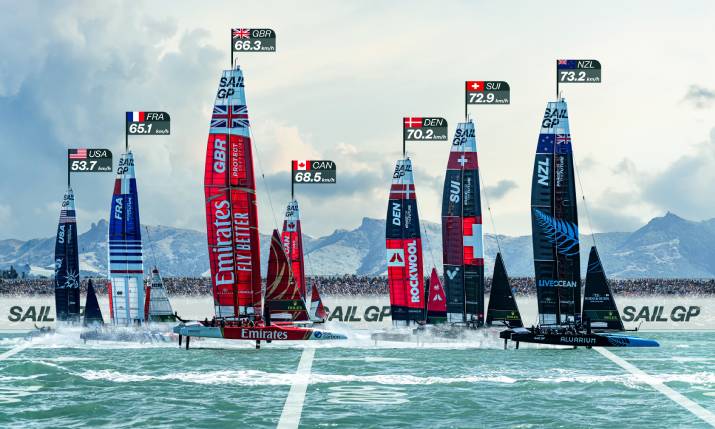Massive 16Kx16K LED display is main feature inside the young Las Vegas venue
A session at this week’s NVIDIA GTC conference and expo in San Jose, CA, took attendees on a journey into Sphere, the next-generation entertainment medium that recently made headlines with a concert residency by rock band U2. During a session titled “Immersion in Sphere: Redefining Live Entertainment Experiences,” experts from NVIDIA, Sphere Entertainment, and hardware/software solutions provider 7thSense explored the new Las Vegas landmark, starting from its conception.
The venue is powered by cutting-edge technologies that allow audiences to share experiences at a never-before-seen scale, according to NVIDIA. That includes what moderator Sepi Motamedi, senior product marketing manager, live media solutions, NVIDIA, described as the world’s highest-resolution — 16Kx16K — LED display, which “wraps up, over, and around the audience to create a fully immersive visual environment, allowing unique performances and audience experiences.”
The U2 residency from late September to early March was the inaugural event at the new Sphere in Las Vegas.
Motamedi kicked off the discussion by asking Alex Luthwaite, SVP, show systems technology, Sphere Entertainment, “What was the vision that led to the making of Sphere?”
The vision “came from our chairman,” Luthwaite responded, apparently referring to Sphere Entertainment Executive Chairman/CEO James L. Dolan, whose regional sports-broadcasting company MSG Networks runs Madison Square Garden in New York and is now part of Sphere Entertainment.
Noting that MSG hosts NBA basketball and NHL hockey games as well as music concerts, Luthwaite explained, “We wanted to do something different. We want to engage the audience instead of having them sit there and passively watch a show. How do we take you somewhere? How do we transport you to do something else? But also how do you do that in a shared environment? … How do I take the whole family and we all engage and all watch the same thing at the same time and do something differently?”
There were challenges with the huge LED screens, he said, noting as an example that “you cannot see any grout lines or any seams or any panels out because [if that happens] it immediately loses the illusion of our taking you somewhere.”
7thSense Principal Systems Engineer Andrew Johnson proclaimed himself surprised by “what doesn’t work in the space sometimes.” Because it’s a virtual space, one might think “you could do everything,” he said, adding that you can’t.
Some content shot with the large format can be “nauseating,” Joshua Grow, SVP, studio core technology. Sphere Entertainment Co., pointed out.
“Nauseating is a good way to put it,” Johnson conceded.
Grow explained, “When we were first learning about the camera [used for Sphere], we would basically strap it on anything we could find, send it out in the field, and say, ‘OK, how does this look?’ We did rollercoasters, which is the worst thing I’ve ever experienced in my life. … There was a lot of learning we had to do to even get to the point where we could kind of teach other people how to do it.”


